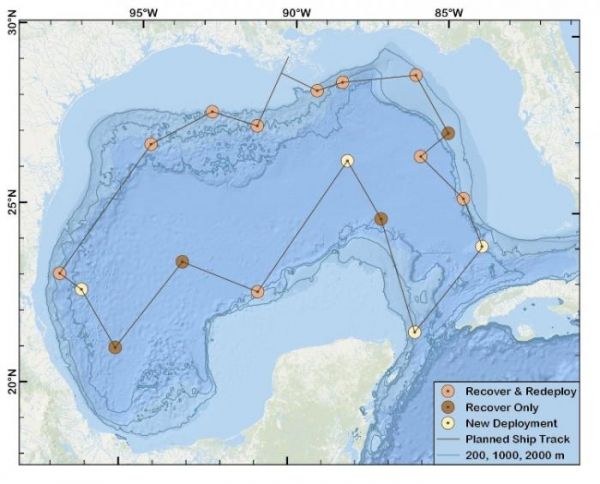Over the next month, the R/V Pelican will transit around the Gulf of Mexico to visit 18 study sites in the deep ocean waters of the U.S. and Mexico. During this time, scientists on board will recover 14 moored underwater listening devices that were deployed last summer to record ocean sounds.
The team will then reset the instruments to record for another year and deploy them at some of the same sites. They will also deploy some at new sites. These data contribute to our understanding of how cetaceans (dolphins and whales) and noise vary over time and space in the Gulf of Mexico.
The R/V Pelican left Cocodrie, Louisiana on August 20 to begin the second of 5 years of data collection throughout the highly industrialized Gulf of Mexico. This research expedition supports several collaborative projects to increase our understanding of:
- Where and when cetaceans occur throughout the Gulf and how and why that is changing over time
- How noise-producing human activities affect the Gulf soundscape and cetaceans
- How we can use opportunistic sound sources to characterize the inner structure of the ocean, for example, deep Loop Current features
Continue reading at NOAA Fisheries
Image via NOAA Fisheries


